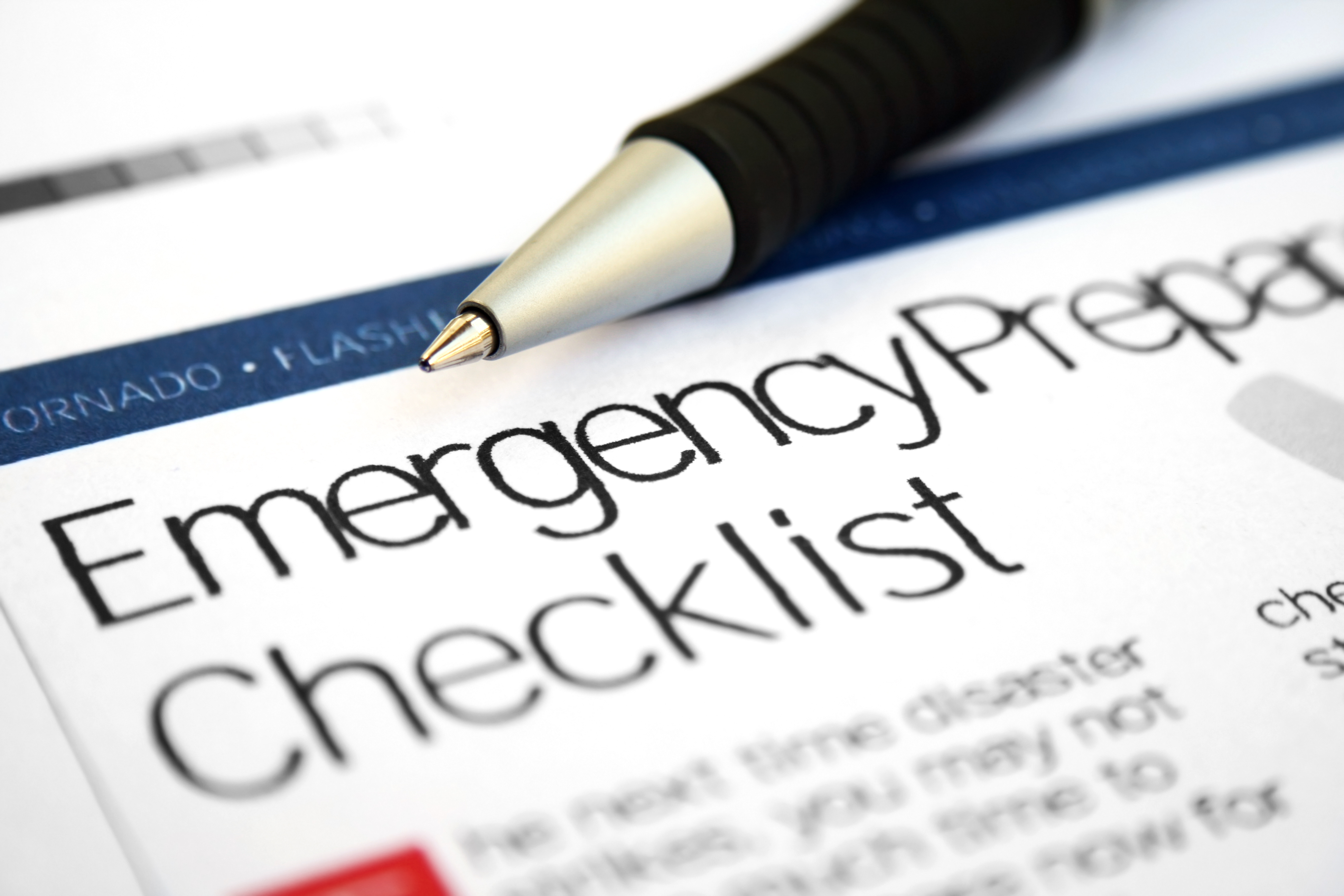In the Carolinas, we are pretty familiar with natural disasters, particularly hurricanes. Though they arrive by sea, there have been many instances of them making their way inland and causing just as much, if not more, damage than they do in coastal cities. But hurricanes aren’t the only type of disaster your association may face. There’s the possibility of tornadoes, earthquakes, fires, floods, active shooters, pandemics, and nameless other occurrences. We occasionally also get a deep freeze down south, which occurs daily in the northern winter. Still, because we aren’t prepared, it can have devastating impacts on property when pipes burst unexpectedly. So no, now is not the time to hide under the covers and have an existential crisis – it’s time to make sure your association has a plan in place!
Come up with a plan
Before an emergency arises, your community should have a plan in place. But, you may wonder, ‘How do we know what kind of emergency might occur?’. While there is no way to predict the future, having a general plan in place and fine-tuning it for whatever kind of emergency you experience will save your board a lot of stress and worry. And, if your area is prone to a particular type of natural disaster, keep that in mind when you’re formulating your association’s plan.
What should your plan include?
While your community’s plan will need to be tweaked to fit your specific needs, some things should be included in any emergency preparedness plan.
- Points of Contact: Determining which board member(s), managers, and other staff members will be the points of contact during an emergency is essential. If no one knows who they should be contacting, precious time will be wasted, ultimately leading to frustration. Further, should one of the primary points of contact be unreachable, it’s good to have a backup person in place.
- Emergency information: Keep emergency phone numbers and websites available in an easily accessible location. For instance, CAMS has an extreme weather website with emergency contact information for NC and SC residents. In addition, if a mandatory evacuation is issued, have evacuation routes posted somewhere so that residents can easily access the information. CAMS’ extreme weather website has many helpful resources that may be needed before, during, and after a natural disaster.
- Determine and delegate responsibilities: Before disaster strikes, plan who will be responsible for preparing what areas of your community. What responsibilities will the board take on? The management company? Committees, if you have them? If your landscape committee will be responsible for making sure common areas are prepared, keep residents apprised of such. If residents are responsible for securing their outdoor furniture and other items, make that clear and send out reminders. If you have an on-site maintenance staff who will be in charge of preparing community amenities, be sure they know that and know exactly what they’re supposed to do.
- Insurance: Though we’ll touch on this more in a bit, be sure that you have the association’s insurance document contact info printed out and at hand so that when the disaster passes, you can quickly contact the insurance agent to begin the repair process.
- Photos: Not every association does this, but it is undoubtedly a good idea. Take pictures of the buildings and common areas before an impending natural disaster. That way, you will have some “before” photos to compare with any property damage.
- Check safety equipment: If residents stay in their homes (particularly condos) during a natural disaster, ensure that all safety equipment has been tested and is in working order and protocols have been communicated for power outages. For example, if the building has elevators, be sure that residents know where the stairs are should elevators need to be locked down. If a mandatory evacuation is issued, have evacuation routes posted somewhere so that residents can easily access the information.
- Post-disaster gameplan: Though it’s impossible to know the severity of damage your community may incur, it’s good to have a general idea of what you’ll do once a storm passes. For instance, if a hurricane is coming your way, it’s probably a good idea to think about what you’ll do if flooding and wind damage occurs. Likewise, if a deep freeze is predicted, you may want to consider how long it will take things to thaw and what you’ll do about downed trees and power lines. Finally, regardless of the type of disaster, it’s imperative to have a predetermined list of contact information for service providers in your area to know who to call to begin repairs.
- Have a reserve study (especially if you haven’t in a while): Why do we need a reserve study? Hiring an engineer to check the integrity of various elements of your association will tell you whether there are structural defects or other underlying issues, giving you time to repair these issues before an extreme weather event worsens.
Sounds like a lot, right? Well, it can be. But creating a plan, while tedious, will save you a world of stress when the time comes for you to use it. And, for CAMS clients, some plans have been drafted that your community manager can fine-tune for your particular community and help implement when the time comes.
Remember, the plan you made ten years ago may not work for your community anymore. So, it is advisable to review your emergency plan each year and make any needed changes.
Communications
So, you have to let residents know about the impending emergency event, what the association’s plans are, and what they need to do. But how are you supposed to relay this information to them? Send out 800 individual emails? No. Thankfully, if you’re working with a professional management company like CAMS, your community manager will handle sending e-blasts to your community members with details about storm predictions, what residents should do, and what the board is doing to protect the association.
It is critical to send regular updates to residents throughout the emergency and restoration process, so everyone is on the same page and updated on what is happening in the community. But, it’s even more critical to educate owners on expectations before, during, and after an event when the phones and power aren't working and properties are inaccessible. CAMS has resources and online tools that help with communications to and from owners and many years of experience assisting associations through the recovery page.
After a disaster, are board members solely responsible for contacting various contractors and insurance agents? While you can be if you so choose, professional management companies can relieve that burden in many instances and be the point of contact on your board’s behalf.
Insurance
First, we at CAMS are not insurance providers and aren’t offering insurance advice. However, it is always a good idea to review your policies with your agent each year to ensure you have enough and suitable types of coverage for your association. The last thing you want is to find yourselves post-disaster only to realize you don’t have the coverage you need. And as we mentioned earlier, make sure someone from the board has all of the association’s insurance information handy, so you don’t have to go searching for that right after a natural disaster has hit your community. While the management company will also have copies, it never hurts for board members to have their documents handy.
Post-disaster recovery
The recovery process will, of course, depend on the type and severity of damages your community incurred. It may be as simple as clearing debris and replacing a few shingles or could be as bad as mitigating flooding and dealing with trees having fallen on homes and common area buildings.
No matter the damage, however, the plan you’ve created will assist you in jumping into the recovery process as soon as the danger has passed. Some contractors included in your plan should be general contractors, lawn care providers, water and mold mitigation teams, electricians, plumbers, and even perhaps engineers. Thankfully, your CAMS community manager has access to licensed, insured, and reputable service providers who can handle this part of the repair process for you.
Keep in mind that these days, the US is experiencing a severe labor and supply shortage, so despite having a perfect plan in place, it may take longer than usual to have repairs made. While everyone wants things fixed as soon as possible, repair crews are trying their best to get to everyone in times of natural disasters, and a little patience may be required.


